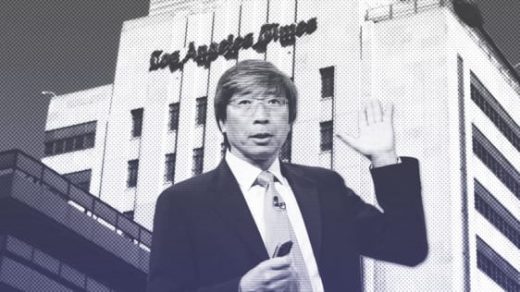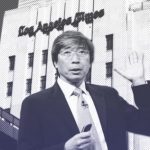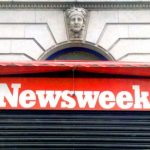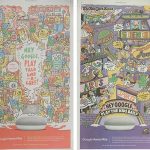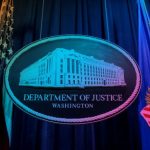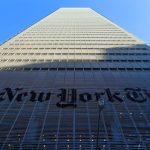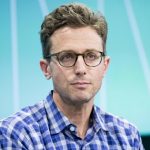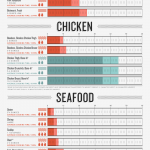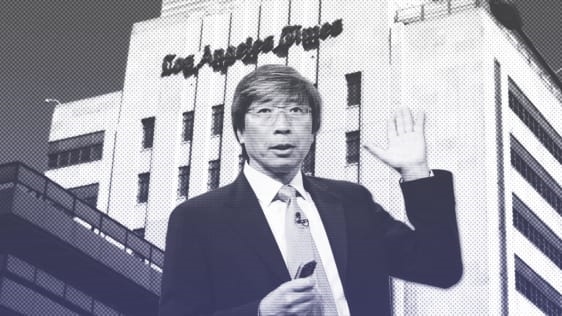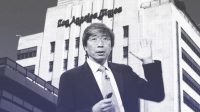Meet The Eccentric Billionaire Who’s Negotiating To Buy The LA Times
Today it seems that only people smart enough to amass great fortunes are willing to make the potentially dumb decision to buy a newspaper. Jeff Bezos, the world’s wealthiest human, purchased the Washington Post in 2013. Now Dr. Patrick Soon-Shiong, one of the richest people in Los Angeles, is hammering out a deal to acquire his hometown paper, the Los Angeles Times, as well as the neighboring San Diego Union-Tribune. That’s according to a report in Bezos’s paper, since confirmed by the L.A. Times itself.
For Soon-Shiong, it’s the culmination of a process begun in 2016, when he became a major shareholder in Tronc, which owns the two papers, along with others such as the Chicago Tribune and the New York Daily News. The doctor/entrepreneur, with an estimated net worth of $7.8 billion, according to Forbes, now wants to buy the two papers outright from their very troubled parent company at a price estimated (again by the L.A. Times) of $500 million.
It’s easy to see why Tronc and its southern California holdings would want to part ways. Since Tronc’s forerunner Tribune Company took over the L.A. Times in 2000 there have been rounds of layoffs that decimated the editorial department (although it kept winning awards), the 2008 bankruptcy of Tribune, and short tenures for senior executives. January alone saw the ouster of editor-in-chief Lewis Dvorkin and publisher Ross Levinsohn (the latter due to sexual harassment allegations from previous jobs). It’s also easy to see why Soon-Shiong, a huge fan of his adopted city, would want to add one of its iconic institutions to his empire.
Soon-Shiong made his fortune (which has declined of late) in healthcare, mainly cancer treatment. “Curing cancer” is the archetype of hyperbolic promise, and one that critics accuse Soon-Shiong of waving about in an effort to raise money and his personal stature. Regardless of how believable his claims are, the strategy is working for the doctor, who has had high-level access to both the Obama and Trump administrations, as well as the Clinton family. With these connections, a professional agenda to remake healthcare delivery, and ownership of a major newspaper, Soon-Shiong could wield a lot of influence in the 2018 midterms and 2020 presidential election.
Friends In High Places
His closest political ties are to former Vice President Joe Biden, who hasn’t ruled out a 2020 run for the White House. The two men became friends through the tragic circumstances that Biden says kept him from running last time: the death of his 46-year-old son Beau from brain cancer in 2015. Soon-Shiong consulted with the Bidens during Beau’s illness, and the doctor served on the Cancer Moonshot program that Biden led during his last year as vice president. The goal was to develop breakthrough treatments such as immunotherapies targeted to the genetic mutations in a specific patient’s tumors.
That connection led Soon-Shiong’s critics to worry that the doctor was stretching the truth—an especially troubling concern for someone who will own a major news organization. The morning before Barack Obama’s last state of the union address, in which he announced the Cancer Moonshot, Soon-Shiong announced his own Cancer MoonShot 2020 initiative—a mostly private-industry collaboration on developing next-generation treatments, with Soon-Shiong’s NantWorks conglomerate of (mostly) medical firms at the center.
The nearly identical name made it look like an effort to steal the White House’s thunder, and it certainly confused journalists, including me. (Soon-Shiong’s project is now called Cancer Breakthroughs 2020.)
Over the years, Soon-Shiong’s reputation has also been marred from some deals gone wrong with medical facilities that had contracted with his health-tech services. In 2017, Politico did an extensive investigation of his philanthropic efforts, mainly through the Chan Soon-Shiong NantHealth Foundation, that seem to funnel tax-exempt money to health-tech projects run by his own companies, as well as leveraging additional funding from other donors to benefit Nant company contracts. (I described these and other controversies in my 2016 profile of Soon-Shiong.)
Running a controversial foundation is a charge that Soon-Shiong shares with both Trump and the Clintons. He and the Clintons have combined forces in the past, such as 2014 pilot projects with the Clinton Foundation on healthcare tech. Soon-Shiong also donated $50,000 to Hillary Clinton’s presidential campaign effort, according to the FEC.
But old alliances don’t seem to have hurt Soon-Shiong’s relationship with the new boss. He met with then President-elect Donald Trump and Vice President-elect Mike Pence for dinner just after the election to discuss “innovation in the area of medicine and national medical priorities that need to be addressed in our country,” according to the transition team. Like many a mogul, Soon-Shiong has learned to cozy up with both parties. A newspaper boss who’s ambivalent about political outcomes could bode well for objective journalism in the coming elections.
A True Angelino—Of A Sort
While Seattle-based Bezos invested in a newspaper on the other side of the continent, Soon-Shiong’s purchase, in keeping with his style, is very close to home. The future doctor was born in South Africa in 1952 and earned his medical degrees in Johannesburg and Vancouver, but since joining the UCLA medical staff in 1980 has been a diehard Angelino. He took up surfing, married a semi-famous actress (Michelle B. Chan of MacGyver), and raised a daughter. His other philanthropic effort, the Chan Soon-Shiong Family Foundation, primarily funds education and healthcare access in the L.A. area.
NantWorks is based in Culver City, one of the prime locations in L.A. County for the movie industry, with neighbors like Sony Pictures. Nant’s complex includes its own sound stage, though the company fails to clearly explain why. Like moguls of LA’s traditional industry, Soon-Shiong owns a mansion, in fact a complex, in the ritzy city of Brentwood. One other piece of L.A. he owns: a share of the L.A. Lakers, purchased from Magic Johnson.
The Times would be the capstone of Soon-Shiong’s Los Angeles empire: It’s hard to imagine him not thinking about the legendary Chandler family, which ran the L.A. Times (and to an extent, L.A. itself) for over a century. But what he would do with that power is unclear. In 2016, when Soon-Shiong invested $70.5 million in Tronc, he also promised to donate access to 100 technology patents to enable interactive and immersive experiences for readers. He was vague in his initial pronouncement and the plan remains so. This is another difference from Bezos, who came in with a clear mission to radically upgrade the Post‘s technology, which he’s done.
Both men preside over webs of businesses, but in spite of being much smaller, Soon-Shiong’s is nevertheless harder to fathom. The way money flows between his foundation and companies is just a taste of the intertwining business interests that are a hallmark of his management style. He’s sold companies but maintained interests in them. He’s also directed one company to invest in another, only to have that company invest back in the first one. Various Nant entities seem to overlap each other. The corporate organizational chart is perhaps best understood as a map of the doctor’s polymath mind.
On the positive side, this corporate culture could lead to better collaboration between the L.A. Times and the San Diego Union-Tribune, which already share some operations. On the negative side, the papers may get pulled into a complex accounting web that obscures finances. And given Soon-Shiong’s propensity to create dependencies among his business entities, there’s a danger that the two Southern California newspapers will not have the most objective reporting on the medical industry or other areas of Soon-Shiong’s business interests. Here Soon-Shiong can learn from what Bezos at least promised when addressing his new staff at the Post: “We will continue to follow the truth wherever it leads.”
Fast Company , Read Full Story
(24)

